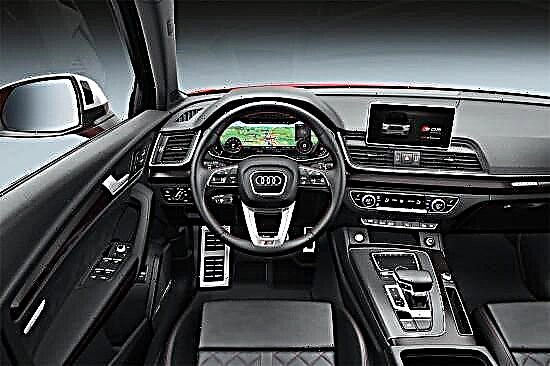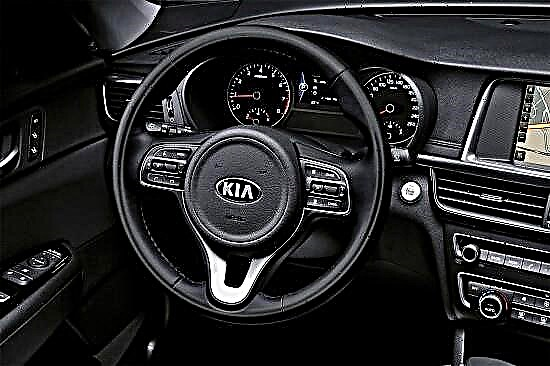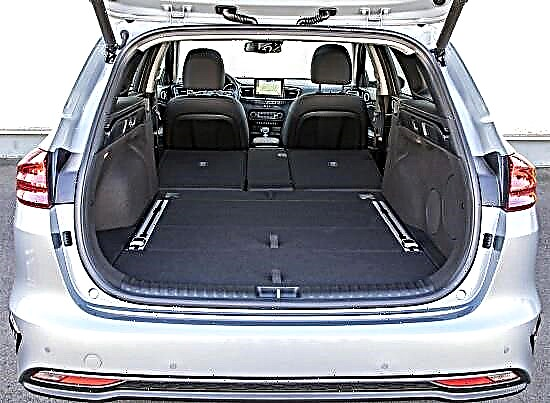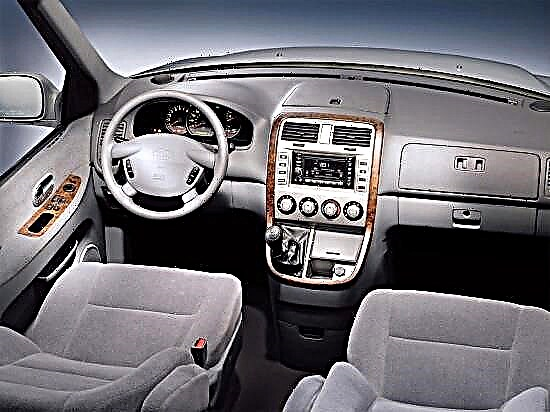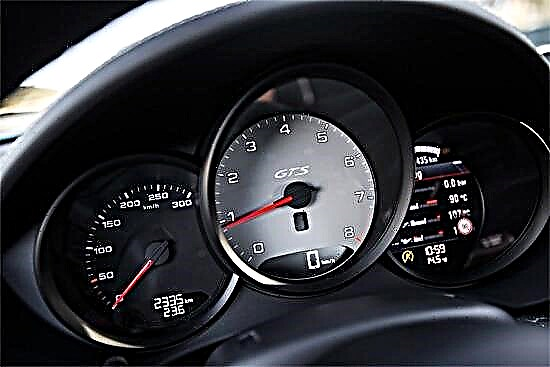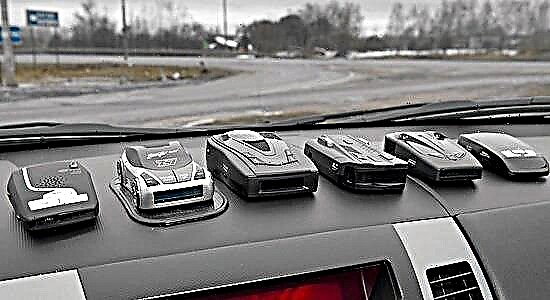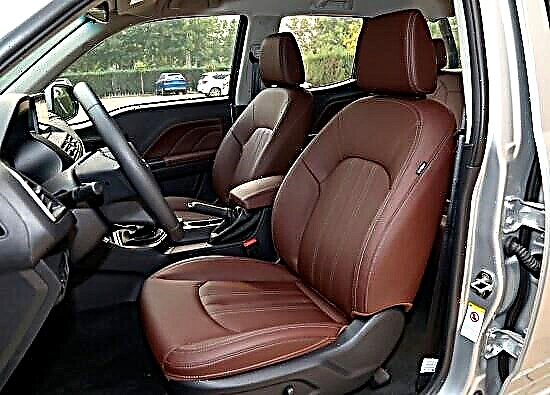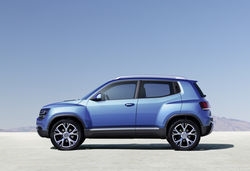Ratings of cars and auto products
Reviews, comparisons & tips for motorists
The choice of a car should be approached with the utmost care and responsibility. Such a business definitely does not tolerate haste and hasty decisions.
The modern car enthusiast has at his disposal a huge arsenal of tools in order to compare and contrast different cars, find the difference between them, determine the similarities and finally decide which option suits him best.
Currently, there is an increased demand for cars in the compact crossover segment. This is a relatively young category, in which almost all automakers have already offered their options. Everyone is trying to prove their superiority over the rest. Some have to constantly be in the role of catch-up.
Fairly, Volkswagen Tiguan and Toyota RAV4 cars are considered the most popular representatives of the compact crossover class. There are many similarities between them, but significant differences are also noted. This does not allow a potential buyer to make a decision and understand which is better - Volkswagen Tiguan or Toyota RAV4.
Passport overall dimensions
You can compare two cars with each other by dry numbers and official data, as well as by the results of their testing in real conditions on asphalt, in the city, on the highway and outside asphalt areas. Only in this way will it be possible to compile truly objective comparative statistics and determine the favorites in one aspect or another.
In fact, East and West have come together in the struggle for market leadership. Each of them is ready to offer a wide range of features, characteristics and benefits. But cars also have some drawbacks, which should definitely be emphasized.
Without preliminary analysis and detailed study, it is impossible to say which crossover is better to buy if a Toyota RAV4 or Volkswagen Tiguan is offered to choose from.
First, take a look at their overall dimensions.
The new 4th generation of the Japanese crossover has noticeably changed, it began to look completely different than its predecessor. At the same time, the overall dimensions have increased significantly. Still, Japanese designers managed to fit into the compact crossover category. Although, if you look at the RAV4, it might seem like a full-fledged mid-size SUV:
- length is 4605 mm .;
- the height here is 1670 mm .;
- width 1845 mm .;
- wheelbase 2660 mm.;
- curb weight from 1575 to 1715 kilograms;
- ground clearance 197 mm.
The second generation Volkswagen Tiguan also surpassed its predecessor in terms of overall dimensions. The car has received a greater length and width, but the height has become a little less. If we compare the Tiguan and the Japanese RAV4 crossover from Toyota, then the German is ready to oppose the following dimensions:
- the length was 4486 mm .;
- crossover width 1836 mm.;
- height 1670 mm .;
- wheelbase 2681 mm.;
- ground clearance 200 mm .;
- curb weight 1684 kg.
As you can clearly see, in some parameters Toyota turned out to be larger, in others the dimensions are larger in Volkswagen. But this is clearly not enough to fully compare the two crossovers and determine among them the best car in its class of compact SUVs.
Appearance
It is unlikely that the Japanese model Toyota RAV4 or the same German in the person of the Volkswagen Tiguan needs identification marks in the form of nameplates or inscriptions. The overwhelming majority of motorists will understand what is in front of them. But it will be quite interesting to compare design solutions. Although here it is not necessary to speak about an objective assessment. Appearance has always been a purely subjective criterion.
The Tiguan can be called restrained, pedantic in places and even boring. Well, Volkswagen does not know how to create really bold, expressive and bright cars, although they made several attempts. It is possible that Volkswagen does not even strive for this, adhering to certain standards and acting within the framework of a long-established tradition. No fan of Volkswagen cars will say that their cars are ugly. On the contrary, they consider this approach to design the most correct.
At the same time, the Tiguan is not devoid of some sporty notes in its exterior. The body turned out to be massive and muscular, with neat smooth lines, large windows, solid wheel arches and other signs of a full-fledged crossover with a little off-road scope.
But the Japanese SUV turned out to be less restrained, more sporty and evocative. Moreover, in the new generation, they used rather original body solutions, which made it possible to clearly distinguish the RAV4 against the background of competitors.
If we compare the exterior in terms of its aerodynamic efficiency, then the coefficient of resistance to the oncoming air turned out to be identical. Both Volkswagen Tiguan and Toyota RAV4 have excellent aerodynamics, cope well with oncoming air flows, accelerate actively and do not create a brick effect. A competent approach to the development of an aerodynamic body has a positive effect on fuel consumption and dynamics of the two crossovers.
It would be categorically wrong to choose between these cars purely for their external characteristics. Each of the presented SUVs has its own huge army of fans. Hundreds of thousands of buyers can't be wrong. At the same time, each side will prove that it is their crossover that is more beautiful. Therefore, decide for yourself what you like best, choosing between German restraint and severity and Japanese passion.
Interior
Looking inside these cars, you can't say for sure that the new RAV4 crossover turned out to be significantly better than the German Tiguan. Despite the external restraint of the exterior, the Germans performed everything in the interior at the highest level. The salon turned out to be bright, functional, as practical and ergonomic as possible.
Toyota RAV4 interior
The Japanese are not far behind, offering a wide range of all kinds of options and interesting solutions. Here you can see a large engine start button that replaced the classic turnkey ignition lock, a modern navigation system, a large multimedia display that displays images from the rear view camera in parallel, as well as a whole range of additional regulators, controllers and buttons.
The seats in the Toyota RAV4 are electrically adjustable with a wide range of individual settings. Adding here leather upholstery and decorative inserts, you get an extremely interesting, original and modern interior.
If we compare the brand new Tiguan of the year and the Toyota RAV4, the German also offers an interesting and far less discreet interior, in contrast to the exterior. The Volkswagen salon is focused on creating the maximum level of comfort for the driver and his passengers. Yes, in some places the interior space looks too laconic, but here it is a matter of taste and individual preferences. But you get a wide range of settings to adapt the steering wheel and seats.
The Tiguan also wins in terms of rear passenger space, outpacing its Japanese rival. Additionally, there are armrests with integrated cup holders, a lifting table, ample legroom.
In terms of adjusting the rear row of seats, the RAV4 turned out to be slightly better than the competitor. The Japanese has fewer cupholders, but this is far from the key criterion that makes it possible to call the Tiguan better than the RAV4.
The disadvantages of the Tiguan include two not entirely clear features, or rather, decisions on the part of the designers. To begin with, for some reason they decided to separate the heating of the rear window and the mirrors by installing separate buttons on them. Although most modern cars, including the Toyota RAV4, have a single button for this.
The second disadvantage is more significant, since it makes some people feel uncomfortable. The disadvantage is associated with high thresholds. Catching on to them is not as difficult as it might initially seem. Yes, if you regularly drive through water hazards or there are frequent floods in your area, this may even be an advantage. But under normal operating conditions, the threshold still seems too high.
VW Tiguan interior
Luggage compartment
In terms of the ability to make the trunk even on a small car of an impressive size, practically no one managed to surpass Volkswagen. The same advantage can be clearly seen on Skoda models.
If we compare the luggage racks of the Toyota RAV4 and Volkswagen Tiguan, then here the advantage was on the side of the German. The German SUV provides 615 liters of space for loading luggage, while the Japanese has 577 liters. Although a real look at the luggage compartment does not give the impression that it is bottomless and limitless. Given the ability of the rear seats of the Tiguan to move forward on the sleds and practically rest against the front seats, the useful volume from this only increases. But then you can forget about boarding passengers in the second row. Toyota, on the other hand, honestly gives its 577 liters, and does not claim to be the leader in the segment for this indicator.
But the RAV4 has one obvious advantage in terms of trunk. This is the loading height. Here the Tiguan is clearly inferior. In addition, it is important to note that a regular stowaway was placed in the German's underground, and the Japanese regularly comes with a full-size spare wheel. This largely explains the Tiguan's luggage compartment figures.
Driving performance
In terms of driving performance, it is worth listening to the opinion of a specialist, and taking into account the behavior of Tiguan and Toyota RAV4 cars in real road conditions. This is the only way to give an objective assessment of the two crossovers.
VW Tiguan engine
With such a parameter as safety, none of the SUVs in question have any problems. Both cars demonstrate high ratings of active and passive safety, offer a wide range of systems and assistants.
But the best economy, to the surprise of many, turned out to be on the side of the Japanese crossover, although huge expectations were traditionally placed on Volkswagen. This is not to say that the difference is huge, but it is. For objectivity of comparison in both cases diesel was taken. Toyota RAV4 has a good 150 hp diesel engine in its arsenal. with a volume of 2.2 liters, and the Tiguan has a diesel engine with a similar power, but with a smaller volume of 2.0 liters. You will learn about the technical aspects and offered motors a little later.
As a result, in the city, a German diesel engine consumed about 9.2 liters of diesel fuel for every 100 kilometers in the course of the tests. Outside the city, consumption fell immediately to 5.7 liters. The Japanese SUV in the city showed an appetite of just 8.2 liters per 100 kilometers in urban settings. On the track, the difference is not so significant, but still the RAV4 won with its 5.5 liters per 100 km.
Driving into the city or on the highway, that is, simply starting the movement, you can quickly feel the difference between two compact crossovers that have similar technical characteristics, prices and equipment. You can feel the difference by activating hearing. Objectively, the sound insulation of the Japanese SUV turned out to be significantly better than that of the German competitor. Affected by the fruits of the active work of Japanese engineers to improve sound insulation and the use of new noise-absorbing materials. As a result, the Toyota RAV4 is really quiet. The Tiguan is not noisy. It's just that the soundproofing level is normal. You will have to hear the engine running, if you do not take additional measures for noise insulation.
The experts were extremely interested in comparing the two cars in the classic crossover test. As a result, the cars were on the snake obstacle. As expected, Toyota did not show the best behavior. This manifested itself in the form of a roll and the need for the driver to work ahead of the steering wheel. But the Volkswagen Tiguan is literally made for such maneuvers. The handling is amazing, with no hint of roll even when cornering aggressively. The German SUV passed the cones with surprising ease and ease, leaving an extremely pleasant impression.
The RAV4's suspension is softer. Somewhere it plays in favor of the car, and in some places it negatively affects the feelings of the driver and passengers. The same potholes and pits Toyota can run softer, avoiding hard knocks.
The gearbox used speaks in favor of the Toyota RAV4. In this case, two machines were compared. The automatic Japanese transmission works quickly, there are no slowdowns here, unlike the automatic transmission, or rather the DSG, offered for the Volkswagen Tiguan. This box slows down a little and does not allow you to fully experience the full potential of an objectively good diesel engine. Hence, not the best acceleration dynamics and a loss to a competitor in the set from 0 to 100 kilometers per hour.
Moreover, there is a rather interesting trend. If you put two cars with diesel engines and automatic transmissions side by side, starting the simultaneous acceleration, they will go absolutely on par to 80 kilometers per hour. The starting speed is decent in both cases. But from the mark of 80 kilometers per hour at the Volkswagen box, delays begin. As a result, the Tiguan is 0.8-1 seconds behind the RAV4.
In terms of vehicle operation in off-road conditions, one of the candidates has no significant differences or clear superiority. Initially, you need to understand that we are talking about the compact SUV segment, focused mainly on urban exploitation. The presence of all-wheel drive and a confident diesel engine allows the Volkswagen Tiguan and Toyota RAV4, if necessary, to get out on their own from the most difficult situations outside the asphalt road. But buying these crossovers as a passable SUV and operation on the ground is definitely not worth it.
Toyota RAV4 engine
If you take a closer look at the cars, it is the Japanese crossover that looks more adapted to off-road, despite the lower ground clearance. At Volkswagen, there is a slight lack of sharpness in the steering. Also considered a big disadvantage is the use of a DSG box. Only the lazy did not criticize it, although objectively this box has an excellent level of reliability and high reliability.
Configuration and cost of cars
From the German automaker for the Volkswagen Tiguan, 5 power plant options are provided at once:
- The simplest version of the gasoline engine has a volume of 1.4 liters and produces 125 horsepower. Such an engine is combined with a 6-speed manual transmission or a six-speed DSG gearbox.
- The next in the hierarchy is the same gasoline power unit, but already boosted to 150 horsepower. Can only be matched with a six-band DSG gearbox.
- This is followed by the first of the 2.0-liter petrol engines. The simplified version received a boost of up to 180 horsepower. Works in conjunction with DSG in 7 steps.
- An improved version of the two-liter gasoline engine has a capacity of 220 horsepower. The box is used the same as that of the previous ICE.
- The only diesel engine has 2.0 liters of volume and 150 horsepower. The box is still the same, namely 7DSG.
A relative disadvantage of the initial 125 horsepower engine is the lack of all-wheel drive. When equipped with such an engine, the Tiguan will be strictly front-wheel drive. A petrol engine with 150 horsepower, depending on the wishes of the buyer, can be taken with full or front-wheel drive. All other engines are all-wheel drive only.
The starting price for the German crossover is 1.35 million rubles. For the top-end configuration, you will have to pay at least 2.2 million rubles. The maximum equipment with a diesel engine starts at 2.05 million rubles.
In the case of the Japanese crossover Toyota RAV4, consumers are offered 3 power plants to choose from:
- The simplest version provides for a 2.0-liter gasoline engine. From it, Japanese engineers managed to extract 146 horsepower.
- Next in terms of power is the diesel version. The volume of the internal combustion engine was 2.2 liters, and the output here is 150 horses.
- The top-end is a gasoline power unit with a displacement of 2.5 liters. Its potential is 180 horsepower.
For the two-liter version, a six-speed manual or a continuously variable variator is provided. The buyer can receive a car with such an engine with full or front wheel drive.
For all other engines from the Japanese automaker, only four-wheel drive and a six-speed automatic transmission are provided.
The cost of cars from Japan starts at 1.48 million rubles. At the same time, you can safely pay more than 2.2 million rubles for top-end configurations. The diesel version with the maximum level of equipment will cost the motorist at least 2.1 million rubles.
Summing up
Now each of the car enthusiasts must answer the question of what is better to choose if the Toyota RAV4 and Volkswagen Tiguan are offered.
Initially, many might have thought that the Volkswagen Tiguan would cost significantly more. Yes, the German crossover is indeed ahead of its Japanese competitor in many ways. But at the same time, it cannot be said that the Toyota RAV4 has lagged far behind or in something significantly inferior. And in the end, the Tiguan was more affordable.
The Tiguan can be described as a solid, discreet, high-quality car, made by people and for people. Based on pure logic, dry numbers and comparison, a certain advantage will be on the side of the representative of the German automaker. This is an excellent build, better handling, a large selection of engines, a comfortable and spacious interior.
But numbers are nothing when it comes to the actual conditions of choice. If you put a Toyota RAV4 and Volkswagen Tiguan in front of a person, then for some reason he will be more pulled towards the Japanese SUV. Yes, he knows the weak points of this crossover, he knows that Volkswagen is better on a number of criteria. But this amazing magic that the RAV4 has, often forces you to make choices not with reason, but with emotion.
That being said, no one says the RAV4 is a bad car. This is an excellently assembled crossover with an interesting, bright and modern design, excellent interior ergonomics, a fairly soft suspension, and a rich selection of the latest technologies. Such machines are chosen by the younger generation, which strives to stand out, be bright and noticeable. If we put all emotions aside, approach the choice as consistently and pragmatically as possible, then Volkswagen will win, albeit with a slight advantage.

